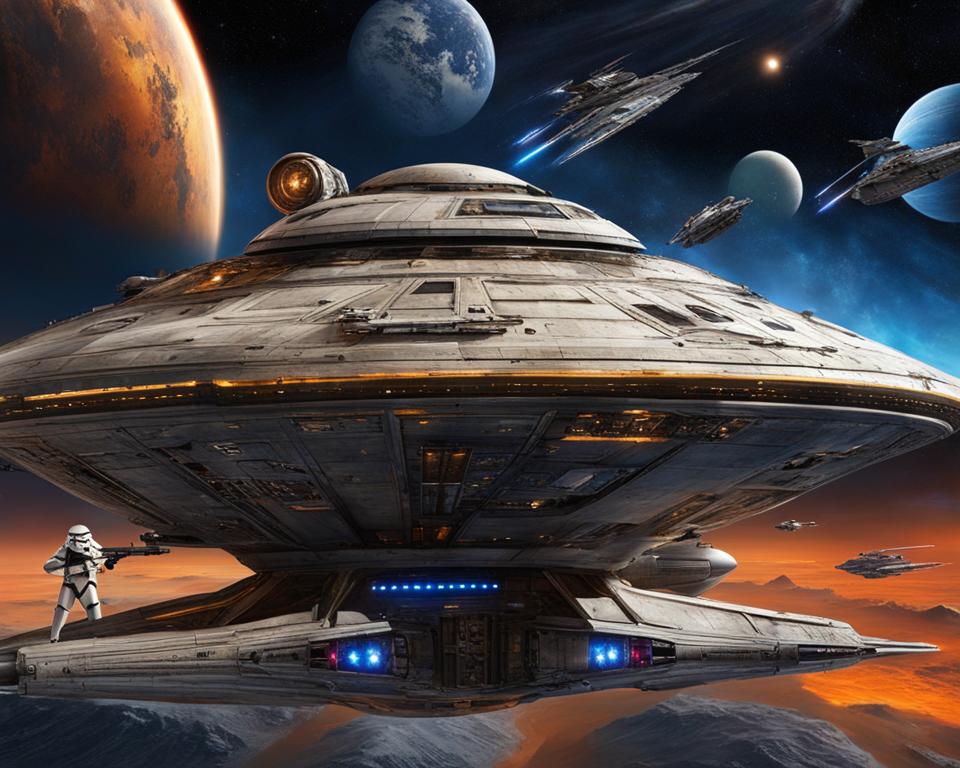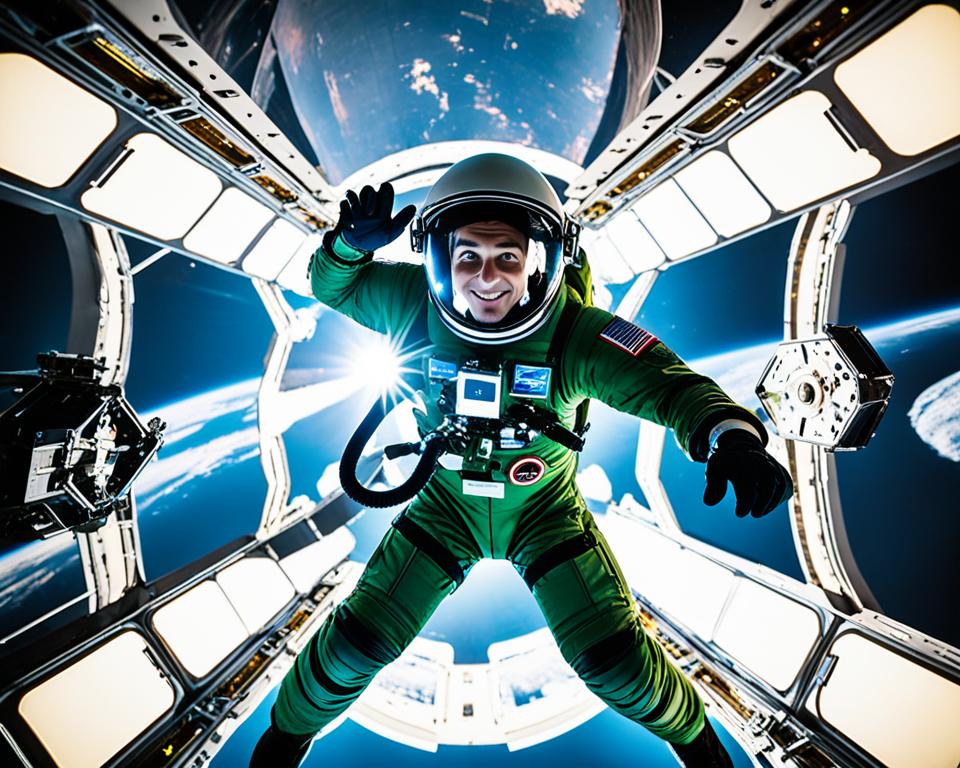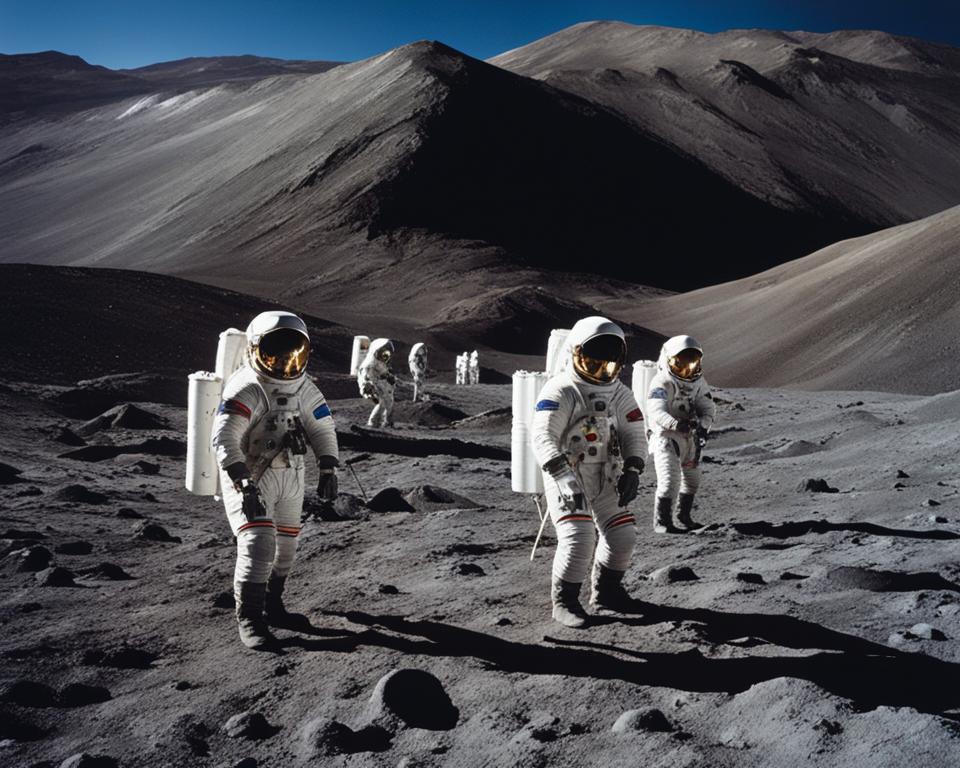Adverts
Since ancient times, humanity has been fascinated by space and the stars. Questions have arisen about the vastness of the universe, the origin of life, and the possibility of life existing elsewhere.
Adverts
Although interstellar travel may seem like the stuff of science fiction, recent advances in science indicate that it may be possible in the future. However, astronomical distances and the technological challenges are enormous, and we are still far from reaching other stars. Even so, progress in space technology allowed us to explore our own solar system and make incredible discoveries. The interplanetary travel offer a fascinating glimpse into the unknown and can open new doors for humanity.
Main Conclusions:
- Humanity has a long history of fascination with space and the stars.
- To the interplanetary travel face enormous challenges, such as astronomical distances.
- Technological advances in nuclear propulsion and in the use of lasers are being explored to make the interplanetary travel a reality.
- Popular culture, especially science fiction series, reflects and inspires interest in space travel.
- Konstantin Tsiolkovsky was a visionary who contributed to the development of space travel.
The Challenges of Interplanetary Travel
One of the greatest challenges of interplanetary travel is the immense scale of space. The distances between planets and stars are so great that the unit of kilometer becomes obsolete. We measure these distances in light years, which is the distance traveled by light in one year. To give you an idea, the closest star system to ours, Proxima Centauri, is approximately 4.24 light years away.
Adverts
Furthermore, current technology based on chemical fuels limits our ability to perform interplanetary travel, because the further and faster we want to travel, the more fuel we need to carry. However, research is underway to develop more efficient technologies, such as nuclear propulsion and the use of lasers, which can propel spacecraft to high speeds.
| Challenges of Interplanetary Travel | |
|---|---|
| Astronomical Distances | The kilometer unit becomes obsolete |
| We measure distances in light years | |
| Space Technology Current | Reliance on chemical fuels limits the ability of interplanetary travel |
| Ongoing research to develop more efficient technologies |
Advances in Space Technology
You advances in space technology have been fundamental to the exploration of space. Research on nuclear propulsion It is nuclear fusion have the potential to make interplanetary travel more viable, as they use more efficient fuels than traditional chemical fuels. In addition, the use of lasers to accelerate spacecraft has been explored as a promising alternative. The technology of solar sails, which use the pressure of solar radiation to generate acceleration, have also been studied. These innovations could allow spacecraft to reach significant speeds and reduce the time needed to travel interplanetary distances.
| Space Technology | Benefits |
|---|---|
| Nuclear Propulsion | Uses more efficient fuels |
| Nuclear Fusion | Potential for more viable interplanetary travel |
| Lasers | Promising alternative to accelerate spacecraft |
| Solar Sails | Generates acceleration through the pressure of solar radiation |
These innovations in space technology are essential to overcome the challenges of interplanetary travel and enable the exploration of astronomical distances. With the continued development of these technologies, humanity will be able to advance beyond our solar system and discover new horizons in the cosmos.
Space Travel in Popular Culture
The idea of interplanetary travel has been explored in popular culture, particularly in science fiction series. Productions such as “Away,” which depicts a manned mission to Mars, and “The Expanse,” which addresses the colonization of the solar system, offer imaginative visions of the future of space exploration. Other series such as “Doctor Who”, “Origin”, “Another Life”, “Lost in Space” and “Star Trek: Discovery” also explore themes related to space travel. These productions arouse the interest of the public and bring reflections on the challenges and possibilities of interplanetary travel.

The inspiration for these series comes from humanity’s fascination with the unknown and space exploration. Through science fiction, we are transported to imaginary universes where interplanetary travel is possible and the final frontier is a tangible reality. These stories stimulate our imagination and lead us to question what lies beyond the stars.
See too:
“Science doesn’t need mystery, but fiction does.” – Arthur C. Clarke
To the science fiction series not only entertain, but also inspire us to think about the future of space exploration. They explore the technical and emotional challenges of traveling through space and present a variety of futuristic scenarios and possibilities. When watching these series, we are captivated by the vastness of the cosmos and the idea that one day we will be able to explore other planets and stars.
Top science fiction series about space travel:
- “Away”
- “The Expanse”
- “Doctor Who”
- “Origin”
- “Another Life”
- “Lost in Space”
- “Star Trek: Discovery”
These series are just a few of the many productions that have captured the public’s imagination with their engaging narratives and stunning visuals. They offer different perspectives on space travel and invite us to dream about what the future holds.
| Science Fiction Series | Description |
|---|---|
| “Away” | A manned mission to Mars and the challenges faced by astronauts during the journey. |
| “The Expanse” | The colonization of the solar system and the struggle for control of space resources. |
| “Doctor Who” | The adventures of a space traveler known as The Doctor. |
| “Origin” | A group of strangers trapped in a spaceship on a mission to colonize a new planet. |
| “Another Life” | A space crew investigates the origin of an alien object that landed on Earth. |
| “Lost in Space” | A family struggles to survive in an unknown space after an accident. |
| “Star Trek: Discovery” | The adventures of Starfleet on its mission to explore new worlds and civilizations. |
These series are a testament to the lasting impact of space travel in popular culture. They remind us that although we are still far from reaching the stars, our desire to explore the unknown remains as strong as ever. And who knows, one day we may witness interplanetary travel become a reality.
Konstantin Tsiolkovsky: The Visionary of Space Travel
Konstantin Tsiolkovsky, a Russian mathematician, played a pivotal role in the development of space travel. His vision and contributions revolutionized our understanding of the cosmos and paved the way for the technological advances that made space travel possible as we know it today.
Tsiolkovsky was influenced by the Russian Cosmists, a group of thinkers who combined science and spirituality and believed in the colonization of the cosmos. His vision transcended the limits of Earth, and he dedicated his life to exploring the possibility of traveling to other planets and stars.
One of his major contributions was the formulation of a mathematical equation that demonstrated the possibility of launching rockets into space. This equation, known as the Tsiolkovsky rocket equation, describes the relationship between the final velocity of the rocket, the exhaust velocity of the propellant, and the mass of the rocket at different stages.
“The Earth is the cradle of humanity, but no one can live in the cradle forever.”
– Konstantin Tsiolkovsky
Tsiolkovsky's views on the space exploration and overcoming human limits were pioneers. He believed that humanity had a duty to explore space and that this would bring benefits from both a scientific and spiritual point of view.
The Legacy of Konstantin Tsiolkovsky
Tsiolkovsky's work significantly influenced the Soviet space program and paved the way for technological innovations that shaped the space exploration. His visionary views and theories have endowed humanity with the knowledge needed to reach new horizons and explore the unknown.
Konstantin Tsiolkovsky's legacy continues to inspire generations of scientists, engineers and technology enthusiasts. space exploration. Your tireless dedication and belief in human potential are a reminder that with perseverance and determination, we can make even the most audacious dreams possible.
| Contributions by Konstantin Tsiolkovsky | Impact on Space Exploration |
|---|---|
| Formulation of the Tsiolkovsky rocket equation | Basis for rocket development and space trajectory calculations |
| Pioneering vision of space colonization | Influence on Soviet space program and in future manned missions |
| Education and scientific dissemination | Inspiration for the next generation of scientists and space exploration enthusiasts |
The Soviet Space Program
O Soviet Space Program was a significant achievement in the history of space exploration. The Soviet Union was the first to launch a satellite into orbit, Sputnik, in 1957, and the first man to go into space, Yuri Gagarin, in 1961. These milestones put the Soviets ahead of the United States in the space race.
The Soviet program was based on the work of Konstantin Tsiolkovsky and included the development of advanced rockets and technologies. space pioneers Soviet inventions paved the way for future space missions and contributed to the scientific and technological advances that today make interplanetary travel possible.
To illustrate the influence and achievements of the Soviet Space Program, below is a comparative table of the major milestones of the Soviet and American space programs.
| Frames | Soviet Space Program | United States Space Program |
|---|---|---|
| First satellite in orbit | Sputnik (1957) | Explorer 1 (1958) |
| First man in space | Yuri Gagarin (1961) | Alan Shepard (1961) |
| First woman in space | Valentina Tereshkova (1963) | Sally Ride (1983) |
| First space station | Mir (1986) | Skylab (1973-1974) |
These are just a few examples of the pioneering and achievements of the Soviet Space Program. The legacy left by the Soviets continues to influence the field of space exploration and inspire future generations to seek new frontiers in the cosmos.
Interplanetary Travel: The Future of Space Exploration
Although interplanetary travel is still a technological challenge and reaching other stars is beyond our current capabilities, advances in space technology and the search for innovative solutions brings us ever closer to this futuristic vision. Interplanetary travel represents an unexplored frontier that awakens humanity's curiosity and imagination.
The idea of exploring other planets and star systems is closer to reality than ever before. Scientists continue to research and develop technologies that will allow us to push the boundaries of space and reach places never before reached.
While we don’t yet have a plan in place to slow down spacecraft and explore other star systems, the idea of reaching the closest star to our solar system within a single human lifetime is within the realm of possibility. Space exploration continues to be an area of research and discovery that brings us ever closer to unlocking the secrets of the universe.
Interplanetary travel has the potential to expand our understanding of the cosmos, allowing us to study other planets, moons and even search for signs of extraterrestrial life. It can also pave the way for new technologies and scientific discoveries, providing solutions to terrestrial challenges and improving our quality of life here on Earth.
Even though we face significant challenges such as astronomical distances and technological limitations, it is important to maintain enthusiasm and focus on space exploration. The future of interplanetary exploration is full of exciting possibilities that could change our view of the universe and ourselves as human beings. With determination and collaboration between countries and organizations, we can turn the vision of interplanetary travel into an incredible reality.
By exploring the unknown, we are opening new horizons for humanity and building a more exciting and promising future. As we continue to advance in technology and scientific knowledge, interplanetary travel could become a reality and lead us to incredible discoveries about the universe we live in.
Conclusion
Interplanetary travel represents an intriguing and inspiring future for space exploration. Although the challenges are great and the distances unimaginable, technological advances are taking us further than ever before. The pioneering work of Konstantin Tsiolkovsky and the Soviet Space Program paved the way for space travel and showed us that it is possible to expand our horizons and explore the cosmos. As we continue to advance in technology and scientific knowledge, interplanetary travel could become a reality and lead us to incredible discoveries about the universe we live in.
FAQ
What is interplanetary travel?
Interplanetary travel is travel between planets in our solar system or even beyond it.
What are the challenges of interplanetary travel?
The main ones challenges of interplanetary travel are the astronomical distances and technological challenges, such as the lack of fuel and the need for very high speeds.
What are the advances in space technology?
Some advances in space technology include research into nuclear propulsion, nuclear fusion, the use of lasers and solar sails.
What are the science fiction series that deal with interplanetary travel?
Some science fiction series that portray interplanetary travel are “Away”, “The Expanse”, “Doctor Who”, “Origin”, “Another Life”, “Lost in Space” and “Star Trek: Discovery”.
Who was Konstantin Tsiolkovsky?
Konstantin Tsiolkovsky was a Russian mathematician who played a key role in the development of space travel.
What was the Soviet Space Program?
The Soviet Space Program was a program of the Soviet Union that achieved important milestones in space exploration, such as the launch of the first satellite and the first man into space.
Is interplanetary travel possible?
Although still a technological challenge, advances in space technology bring us ever closer to the possibility of interplanetary travel.




